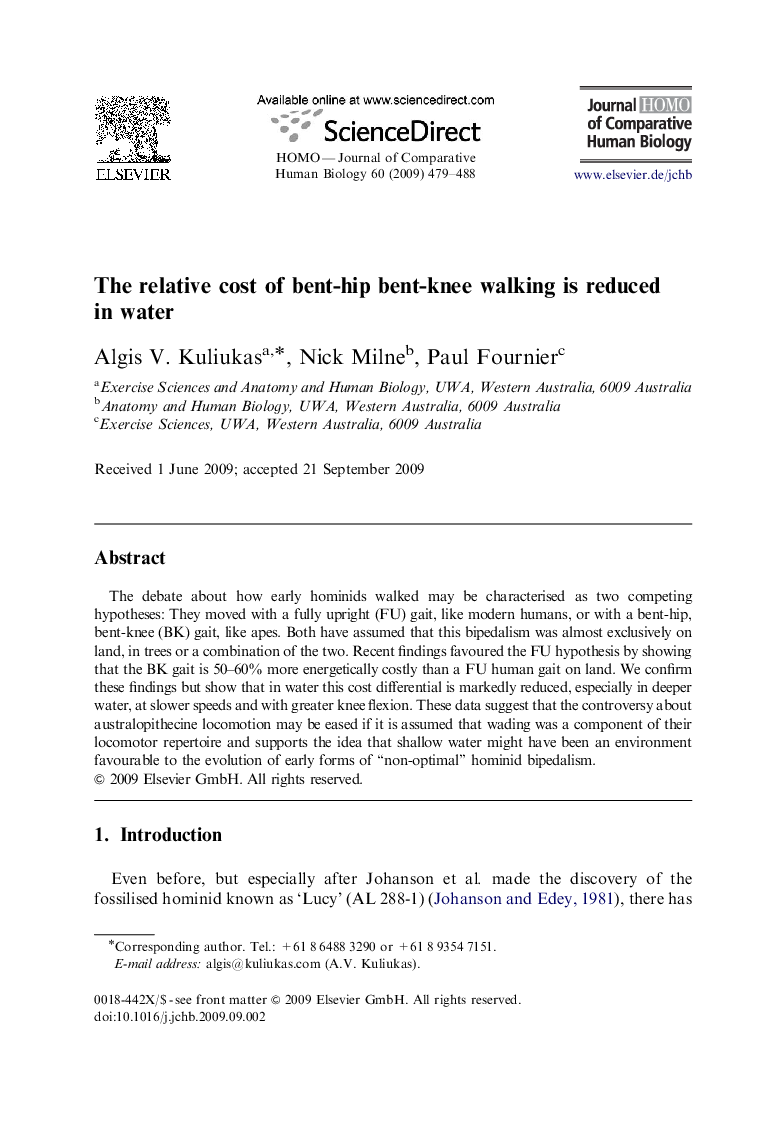| Article ID | Journal | Published Year | Pages | File Type |
|---|---|---|---|---|
| 100539 | HOMO - Journal of Comparative Human Biology | 2009 | 10 Pages |
The debate about how early hominids walked may be characterised as two competing hypotheses: They moved with a fully upright (FU) gait, like modern humans, or with a bent-hip, bent-knee (BK) gait, like apes. Both have assumed that this bipedalism was almost exclusively on land, in trees or a combination of the two. Recent findings favoured the FU hypothesis by showing that the BK gait is 50–60% more energetically costly than a FU human gait on land. We confirm these findings but show that in water this cost differential is markedly reduced, especially in deeper water, at slower speeds and with greater knee flexion. These data suggest that the controversy about australopithecine locomotion may be eased if it is assumed that wading was a component of their locomotor repertoire and supports the idea that shallow water might have been an environment favourable to the evolution of early forms of “non-optimal” hominid bipedalism.
